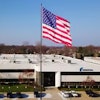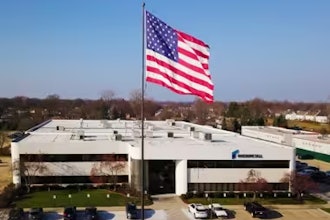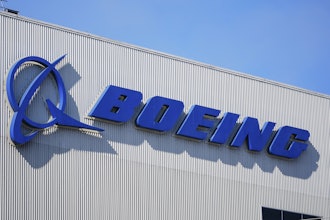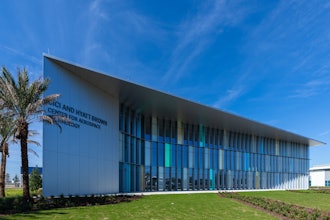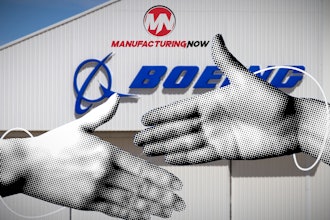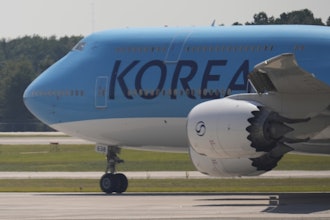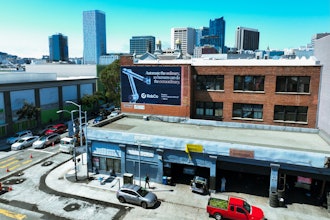
ERIE, Pa. (AP) — With the abandoned smokestacks off the bay and ramshackle factories along 12th Street, it's easy to pin the blame for this industrial city's plight on the loss of manufacturing jobs to China and Mexico.
Many, including President Donald Trump, hold the belief that shuttered factories are what primarily ails Erie and other aging blue-collar company towns.
Yet since 2008, Erie has suffered a less-known and potentially more devastating exodus of well-paying white-collar jobs. Half its CEOs — 220 jobs — have disappeared. The city has shed 8 percent of its accountants, 10 percent of its computer workers, 40 percent of its engineers and 20 percent of its lawyers, according to government data analyzed by The Associated Press.
They are the professional class jobs that buttressed Erie's manufacturing might. And they are the type of work that has increasingly become the backbone of the U.S. economy.
After reviewing Labor Department figures dating to 2008, the AP found that a third of major metro areas — nearly 80 communities — are shedding a greater percentage of white-collar than blue-collar jobs.
In Ohio, such cities as Toledo and Canton have had a harder time retaining jobs in offices than on factory floors. It's a similar story in Sheboygan, Wisconsin. And in Wichita and Topeka, Kansas. And Birmingham, Alabama. And Decatur, Illinois.
"That's one of the most painful aspects of the economic decline of these manufacturing centers: They get hit twice," said Enrico Moretti, an economist at the University of California, Berkeley. "First, they lose the factories. But second, and most importantly, they lose everyone who was supportive of those factories."
It's that second hit that increasingly matters nearly four decades since U.S. manufacturing employment peaked. Without a foundation of white collar jobs, it becomes difficult for these areas to reinvent themselves in an era when the economy more and more requires specialized knowledge and technological skill.
"It's painful because it makes it even harder for the community to recover," Moretti said.
Trump had rallied voters on the promise that he would restore factory jobs to revive areas that had lost them. But the data show how higher-paying occupations are abandoning smaller cities, taking with them a generation of workers who could otherwise start new companies or serve existing businesses.
The AP reviewed data on employment by occupations from the federal Bureau of Labor Statistics and compared metro area figures with national averages. Jobs that were categorized as white collar include managerial, administrative and sales positions. Blue-collar occupations include production, craft, machine operation and transportation positions.
White-collar workers are increasingly shifting from smaller cities and settling in such thriving metro areas as Seattle, Nashville, Chicago and Silicon Valley. As those higher-paying occupations become more highly concentrated, the wealth they generate is less likely to filter through the rest of the country to areas with a long-standing legacy of manufacturing. And while Trump and other political leaders vow to boost businesses with tax cuts, lower taxes may do little for communities with fewer white collar workers who could plow them into new businesses.
In Erie, many business leaders say the city mainly needs to keep and attract more white-collar workers.
Its largest for-profit employer, Erie Insurance, recently restored an old armory and has been renovating old homes nearby, gradually turning part of the city into a corporate campus. Out of a headquarters built as a replica of Independence Hall, with hand-blocked French wallpaper depicting an American Revolution battle, the insurer is leading a private $40 million effort to fill the downtown with apartments and retail, in hopes that a friendlier streetscape will draw more employers and college graduates.
For the company's CEO, the mission is personal. Tim NeCastro has five adult children; only one has chosen to stay local.
"If this is successful, 10 years from now, two more of my kids will move to Erie," he said. "They will find a reason to get back here."
It's the same high-stakes gamble many small- and mid-size cities face. Children who left for college aren't returning home as they once did. Many are choosing to live in metro areas or communities anchored by a major university, like Pittsburgh, 130 miles south of Erie.
In these larger cities, it's easier for white-collar workers to quit their jobs to join employers that offer more money or opportunities for advancement. This trend has turned certain larger cities into magnets that draw employers and better-paid workers away from smaller cities.
"Size matters, and I think, this dynamic is accelerating," said Mark Muro, a senior fellow at the Brookings Institution.
Census Bureau data show, for example, that Chicago added nearly 40,000 college graduates under age 35 since the Great Recession began in late 2007. Boston gained about 10,000, Denver 25,000. Compare that with Toledo, which lost 1,600 young college graduates.
In a 2016 campaign speech in Erie, Trump didn't touch on this brain drain. Rather, he blamed unfair trade — from the North American Free Trade Agreement to the entrance of China into the World Trade Organization — for the struggles in those communities.
"We will stop these countries from taking our companies," Trump said. "You can't do well when you have a government that is so stupid, that is so incompetent."
This argument helped win him Erie County, which had twice voted for Barack Obama. But in the 12 months since Trump's election, Erie has shed about 800 jobs. The number of people seeking jobs declined by more than 2,000. Trump has announced taxes on steel and aluminum imports in hopes of bolstering U.S. industry.
Community leaders in Erie note that manufacturing remains a strength for northwest Pennsylvania. But it seems impossible to restore a long-gone era of prosperity that was built on factory work.
Erie's General Electric locomotive plant peaked with roughly 20,000 workers just after World War II, when whirling assembly lines had helped to secure an Allied victory and an economic boom that followed helped propel growth. Hammermill Paper relied on trucks stacked with logs that rumbled through downtown to its paper mill. Lord Corp. made industrial coatings. Zurn made plumbing equipment.
But as the market for locomotives declined, the GE plant steadily downsized. It will soon have a headcount closer to 3,000. Hammermill was bought by International Paper in 1986. Its jobs went to Memphis.
Lord recently replaced its old plant in Erie with a new factory nearby, but its headquarters remains in North Carolina. Zurn decided in 2015 to move its base to Milwaukee because it saw Wisconsin as a hub for "global water industry leaders."
Many of the factory buildings are decades old, too dilapidated and maze-like to efficiently run an assembly line that needs wide-open spaces. Some long-standing factory workers in Erie earn a healthy $35 an hour. But that's more than many companies are now willing to pay for factory work, thereby limiting how much manufacturing can fuel prosperity in cities like Erie.
Bob Glowacki, who heads a real estate management company and once served on Erie's city council, said the city must look beyond manufacturing.
"It's fine that Donald Trump says he's going to get all the companies that moved to China to come back to the United States," he said. "But if that happened, you're only going to get 20 percent of those jobs back. Technology has replaced them. How do you change that in Erie?"
What people are truly nostalgic for, Glowacki said, isn't merely the grind of factory jobs but the community fostered by the old ethnic neighborhoods, with their churches and clubs where residents once gathered. Chain restaurants in strip malls outside the city proper have supplanted many of these institutions. Housing vacancies have risen around the downtown core.
So instead, Erie's goal is now more to recapture some of those lost white-collar jobs by renovating the downtown. Business leaders see a model to replicate in the Cincinnati neighborhood of "Over the Rhine" with its charming Italianate brick buildings and hipster restaurants.
After taking a tour through Erie's neighborhoods and industrial sites, Glowacki, 66, said he feels hopeful that the city now has a plan of action.
"I've never felt more positive about what is happening in Erie than I do right now," he said.
Yet the clouds remain as the fates of white-collar and blue-collar workers remain entwined.
In October, GE Transportation announced layoffs for 570 unionized workers at the locomotive plant. The move accompanied the loss of 200 management jobs at the same plant, said Scott Slawson, who represents the GE workers as the president of the local union.
Ripple effects from previous layoffs hit more than 40 Erie companies that helped supply the factory. The company is also seeking to divest its transportation division, which is spreading uncertainty for every class of workers in Erie.
"When that corporate jet leaves Erie, there's not room for everyone on that jet — there's very few seats," Slawson said.

